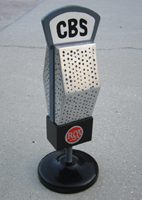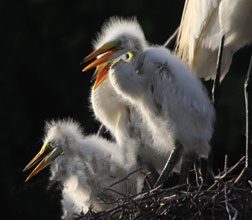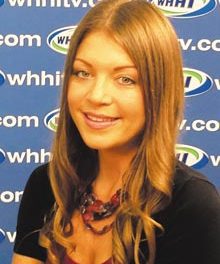 Stephen R. Wise, Ph.D., Parris Island Museum Director and Cultural Resources Manager, is a highly regarded museum curator, writer, historian, event organizer, award recipient, speaker, educational TV spokesperson, and adjunct professor, dedicated to the preservation of South Carolina history, as well as an authority on the Civil War and the US Marine Corps. As Cultural Resources Manager, he has the responsibility of preserving architectural, cultural and archaeological property on Parris Island.
Stephen R. Wise, Ph.D., Parris Island Museum Director and Cultural Resources Manager, is a highly regarded museum curator, writer, historian, event organizer, award recipient, speaker, educational TV spokesperson, and adjunct professor, dedicated to the preservation of South Carolina history, as well as an authority on the Civil War and the US Marine Corps. As Cultural Resources Manager, he has the responsibility of preserving architectural, cultural and archaeological property on Parris Island.
Dr. Wise was kind enough to take time from his busy schedule to discuss his role with the museum as well as his historical knowledge of Beaufort County.
Q: How were you selected for the position of Museum Director?
A:I was finishing up my doctoral degree at the University of South Carolina when I noticed an ad for the museum director at PI on the graduate school bulletin board. I applied and was accepted. I had no affiliation with the Marine Corps.
Q:What changes have you brought about?
A: I was appointed to the position in 1983. The front of the building was the rec center, the rear was the gym. We used about 1/3 of the front space and then as we progress we expanded into the rest of the building.
When I started we had three employees; today we have seven excluding volunteers. Our volunteers are former military, current military, civilians and students. Originally the museum received approximately 50,000 visitors annually. Today, through an increase in advertising, tour groups as well as family and graduation days we have about 130,000 visitors.
Q: When did the “museum” open?
A: It was set up under General Robert Barrow as the Marines Corps’ first ‘Command Museum.’ Today a 2nd command museum is at the recruit depot, San Diego. The two museums are specifically recognized by the National Museum of the Marine Corps in Washington, DC. One of the intentions for our museum was to integrate the community with local military and cultural history of the Lowcountry.
Q: So, is this aspect reflected in the archaeological dig of a few months ago?
A: Actually, a Spanish presence on Parris Island was confirmed by an archaeologist, Stan South, in 1978 and the following year National Geographic funded the first major dig on Parris Island that located parts of the village. An announcement was made at the National Geographic Headquarters July 1979. At the announcement was General Robert Barrow, who was then serving as the Commandant of the Marine Corps.
What you are referring to is the team of archeologists who recently came to Parris Island and, using ground penetrating radar, confirmed that there are large structures (near the Legends Golf Course) which may be the 1st Fort of Saint Marcos. The radar searches for anomalies in the ground and then they try to decide what they are or might be.
The Marine Corps protects the property and no digging is allowed without a permit, and the attainment of permits goes through an extensive review - from multiple agencies, including the National Park Service and 14 Indian tribes who claim heritage relations with Parris Island or their forbearers who would have had connections to the area. If one “digs” one destroys archaeological evidence so the Marine Corps is very careful as to what is allowed and not allowed at the site. It is the Marine Corps’ responsibility to protect the site.
Q: What are some of the notable artifacts found on or around the sea islands?
A: A Revolutionary War era cannon was discovered on Page Point near the Whale Branch River and donated to us. We’ve found lots of remnants like French and Spanish pottery on Parris Island, which we display for the public.
We also received a steel beam from the World Trade Center showing its’ bent bolts - this can be seen on our 2nd floor. And, as far as we know, we have 1 of 6 remaining Requa-Billinghurst machine guns used during the Civil War. This is on loan from the National Museum of the Marine Corps.
Q: Dr. Wise, have you always had an interest in United States history?
A: Yes. As a child my parents (we were from Ohio) would always take my brother and me to historical sites for vacations. I remember specifically going to the Manassas Battlefield when I was 6. I received my Bachelor’s and Master’s degrees in history and studied under noted Civil War historian Thomas Connelly at USC from 1978-1983. My Master’s thesis was entitled: ‘Gate of Hell: The Campaign for Charleston Harbor’ and my Ph.D. thesis: ‘Lifeline of The Confederacy: Blockade Running During the Civil War.’ Both papers were published and well received.
Q: How did you happen to focus on Beaufort?
A: Having settled in at the museum, I was also teaching history at the USCB campus on the Air Station and Parris Island (in my spare time). Beaufort is a fascinating study with so much going on, especially during the Civil War period. Robert E. Lee briefly commanded the area and William Tecumseh Sherman passed through. There were abolitionists and Reconstructionists. Robert Smalls was highly recognized. It was a fascinating time.
In addition, the author Lawrence Rowland, who wrote Volume 1 on the History of Beaufort County, asked me to write a couple of chapters on Beaufort during the Civil War days. I wrote 13 chapters and they took me 12 years, and it would have been even longer had I not had superlative help from my wife, Alice. I had to use all my spare time to finish my portion of the book and, believe me, I did not have lots of spare time.
Q: Do you have an opinion on the recent, controversial requests/demands for the removal of Confederate statues in our southern states?
A: I hate to see it being done. I consider these statues to be the starting point for learning about history; educational items for promoting history - good, bad and indifferent. People can look at the statues as a starting point for research about their background, to learn why the individual or event was considered famous and why the statue was erected. How did it and how does it fit into the historical narrative, then and now? I do believe that the monuments should have waysides explaining their place in history.
Dr. Wise, Thank you for your time today. It was fascinating to speak with you. You are a true wealth of information and we appreciate your willingness to help us with your knowledge.








